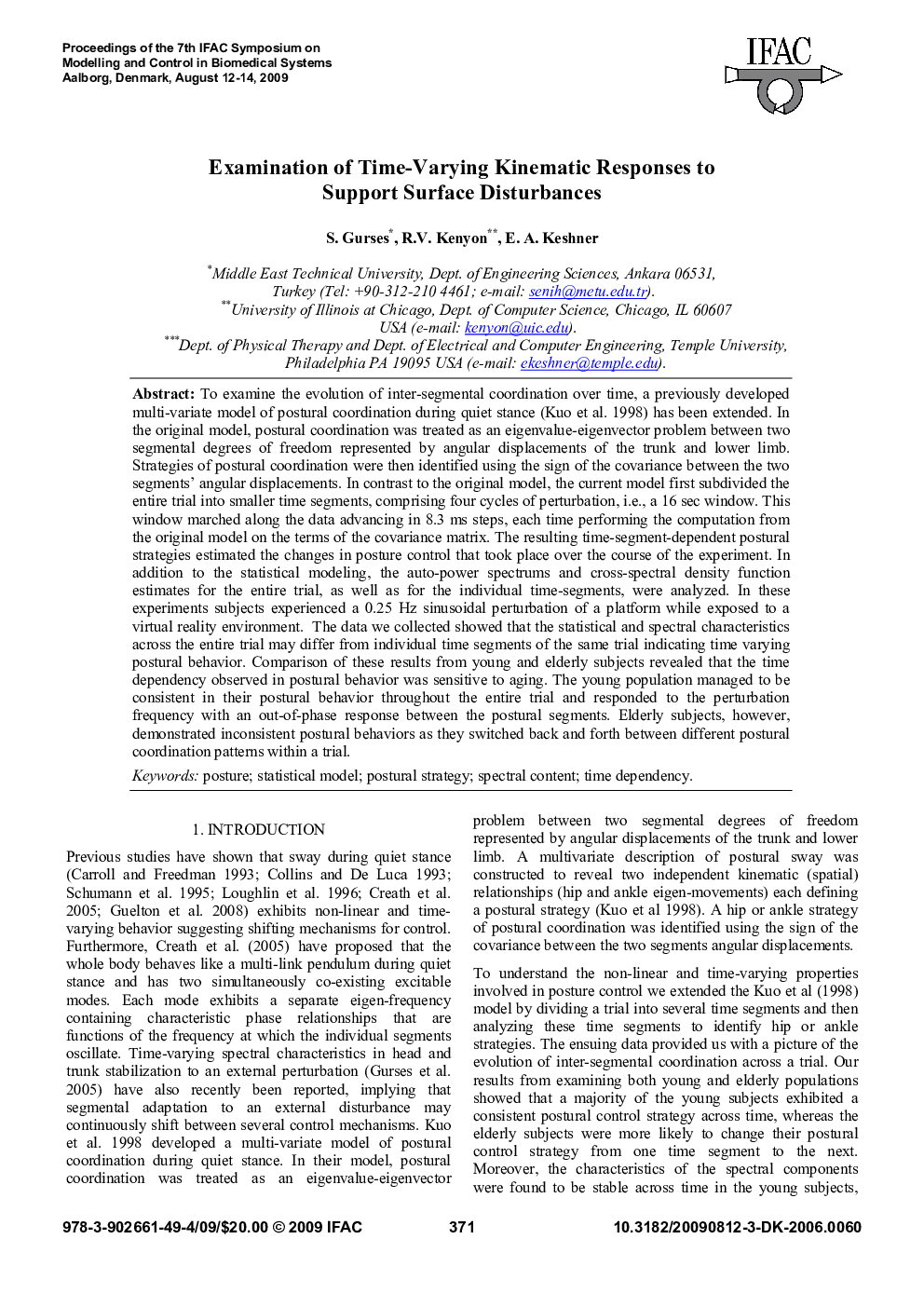| Article ID | Journal | Published Year | Pages | File Type |
|---|---|---|---|---|
| 719490 | IFAC Proceedings Volumes | 2009 | 6 Pages |
To examine the evolution of inter-segmental coordination over time, a previously developed multi-variate model of postural coordination during quiet stance (Kuo et al. 1998) has been extended. In the original model, postural coordination was treated as an eigenvalue-eigenvector problem between two segmental degrees of freedom represented by angular displacements of the trunk and lower limb. Strategies of postural coordination were then identified using the sign of the covariance between the two segments' angular displacements. In contrast to the original model, the current model first subdivided the entire trial into smaller time segments, comprising four cycles of perturbation, i.e., a 16 sec window. This window marched along the data advancing in 8.3 ms steps, each time performing the computation from the original model on the terms of the covariance matrix. The resulting time-segment-dependent postural strategies estimated the changes in posture control that took place over the course of the experiment. In addition to the statistical modeling, the auto-power spectrums and cross-spectral density function estimates for the entire trial, as well as for the individual time-segments, were analyzed. In these experiments subjects experienced a 0.25 Hz sinusoidal perturbation of a platform while exposed to a virtual reality environment. The data we collected showed that the statistical and spectral characteristics across the entire trial may differ from individual time segments of the same trial indicating time varying postural behavior. Comparison of these results from young and elderly subjects revealed that the time dependency observed in postural behavior was sensitive to aging. The young population managed to be consistent in their postural behavior throughout the entire trial and responded to the perturbation frequency with an out-of-phase response between the postural segments. Elderly subjects, however, demonstrated inconsistent postural behaviors as they switched back and forth between different postural coordination patterns within a trial.
